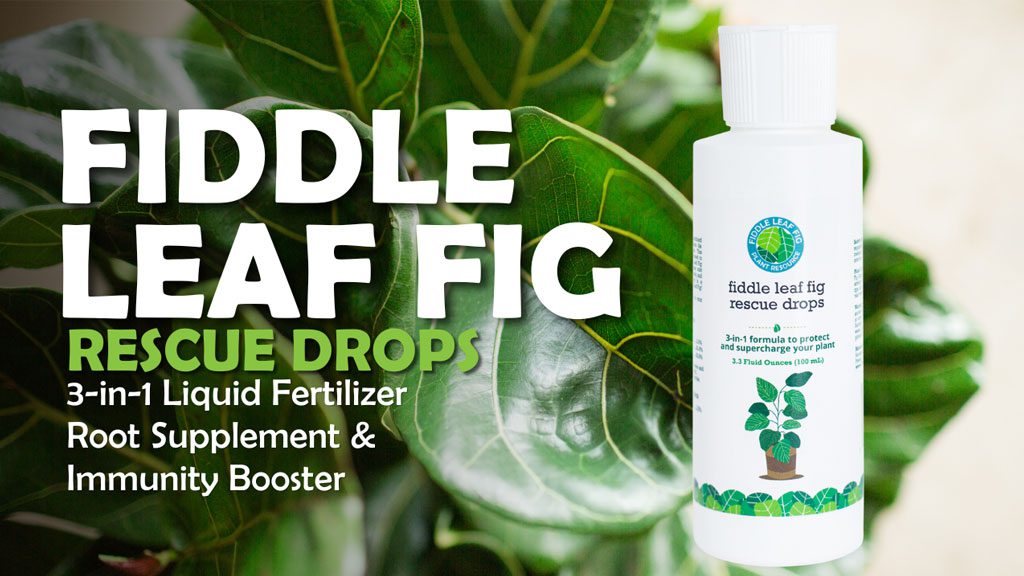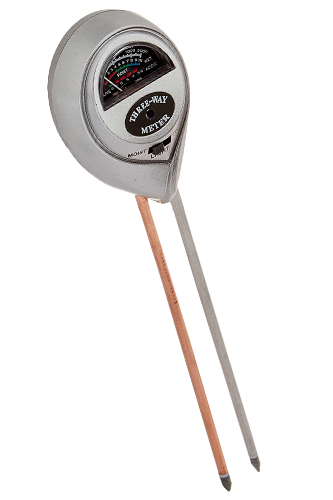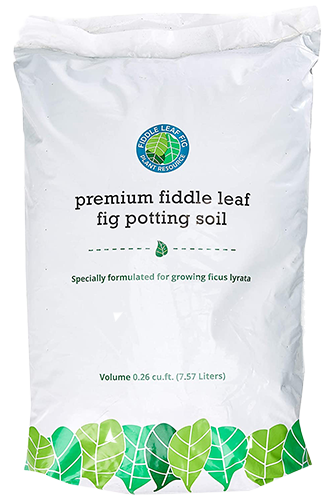Mastering Pest Control: Comprehensive Strategies for Thrip and Springtail Infestations in Fiddle Leaf Figs
Learning to identify thrips and springtails in fiddle leaf figs is the first step in ensuring comprehensive plant health. But the true trick to mastering pest control is understanding what strategies to apply and when. Learn how to get rid of thrips and springtails on a fiddle leaf fig.
Why Are Thrips and Springtails Bad?
Thrips use their sharp mandibles to puncture the surface of leaves and feed on the plants sap within. This can result in yellowing, curling, and browning of leaves, stunted growth, and possibly death of the plant if left untreated.
Springtails, by comparison, are less damaging to the plant, but their presence implies an overwatered plant. This issue can lead to root rot, ultimately killing the plant. Additionally, springtails can overrun a plant’s pot, creating unsightly conditions that ruin the aesthetic of an otherwise beautiful home decor.
How To Deal With Fiddle Leaf Fig Thip Infestations
Identification
The key to dealing with a thrip infestation starts with identification. Thrips are tiny, about 1/50 to 1/25″, making them difficult to spot with the naked eye. They also live in the soil during inactive periods, creating an even more challenging identification process.
To identify thrips, use a magnifying glass to:
- Examine the surface of leaves for a dusting of yellowish, peppery specks.
- Look for feeding scars on leaves, which appear as white streaks or silver patches
- Check the soil for cocoon-like structures (these are the adults)
Ultimately, if your plant has shown fast signs of decline and the presence of any or all of these signs is noticeable, chances are you have a thrip problem.
Isolation
Like human pests such as lice or bed bugs, thrips travel fast and spread quickly. For this reason, thrip-infested plants must be isolated. But isolation isn’t as simple as moving the plant to another room. To avoid spreading thrips to other plants, follow these steps:
- Wear gloves when handling the infected plant
- Clean and disinfect any tools used on or around the infected plant
- Place the pot in a sealed bag (make sure it can still receive light)
- Keep plants in a cooler area, as thrips thrive in warm environments
Isolation periods vary, but it can take up to three weeks for a thrip infestation to be eliminated, so make sure your chosen safe zone can accommodate a plant for that long.
Treatment
Prune the fiddle leaf fig.
Cut away dead or dying leaves from your plant using sharp pruning shears. Even if they aren’t infected, they can quickly become a breeding ground for thrips and other pests. Cut at a 45-degree angle, making sure to avoid leaving a stub that can cause rotting.
Clean the leaves.
Healthy leaves can still have thrip eggs on them. To combat this, use houseplant leaf shine wipes to remove any eggs and keep your plant looking its best. These wipes are made with 100% cotton and contain natural ingredients that keep your plant free of pests and promote healthy growth and shine.
Change the soil.
Adult thrips overwinter in the soil, which can make detection difficult. To prevent a repeat infestation, replace the current soil with premium fiddle leaf fig soil. This soil promotes airflow and drainage, making it less hospitable to thrips and other pests.
Pro Tip: Check out the best way to repot a fiddle leaf fig to reduce plant shock and guarantee healthy growth.
Apply preventative measures.
You’ll want to ensure that future infestations don’t happen, and the best way to do that is with houseplant leaf armor. This unique spray was explicitly designed to protect plants against pests such as thrips, spider mites, and mealy bugs. It forms a natural barrier around the plant’s surface that prevents these pests from attaching themselves and causing damage. By using this spray regularly, you can ensure your fiddle leaf fig stays healthy and pest-free.
Enact more frequent care practices.
When your fiddle leaf fig is recovering in isolation, it’s wise to enact a more frequent care routine that ensures the plant fully recovers. Because of the aggressive feeding habits of thrips, you’ll want to replenish essential nutrients and vitamins with a fiddle leaf fig plant food. This formula added to any watering can boosts leaf development, strengthens root systems, and enhances overall plant health.
You’ll also want to continue using Leaf Shine wipes every day until you are sure the infestation is gone, signs of which include:
- no more yellowish peppery specks on leaves
- no more feeding scars or white streaks on leaves
- no more cocoon-like structures in the soil
- new growth of vibrant, shiny green leaves
These signs can take a while to manifest, but with patience and diligence, your fiddle leaf fig will make a full recovery.

How To Deal With Fiddle Leaf Fig Springtail Infestations
Identification
Unlike thrips, springtails have no wings and are easily identified by:
- their small, elongated bodies
- white, bluish, or grayish coloring (depending on the species)
- six legs and two antennae
- jump height of several inches when disturbed
If you’ve got standing water anywhere near the bottom of your fiddle leaf fig pot or yellowing leaves, chances are springtails have taken up residence.
Treatment
Isolation.
The high jump height of springtails makes them more challenging to contain than thrips. For this reason, you’ll want to follow the same steps for thrips isolation, but it may be wise to put a bag over the plant before walking it to another area. This way, you can avoid spreading the springtails to other plants or rooms in your home.
Pruning.
Springtails can’t damage healthy leaves but love feeding on dead or yellowing foliage. Remove any affected leaves with sharp pruning shears to prevent them from spreading and causing further damage. Springtails are attracted to moist environments, so make sure to dispose of these leaves in a sealed bag.
Change the soil.
Overly damp soil is an invitation for springtails to take up residence. By changing the soil, you’ll remove their preferred habitat and make it less attractive for them to stay in your fiddle leaf fig pot. Use smart gravel with your fiddle leaf fig soil for enhanced drainage, ensuring you won’t get a repeat infestation.
Clean the leaves.
As with thrips, cleaning the leaves of your plant to remove any springtail eggs is essential. Use leaf shine wipes or a damp cloth with mild soap to gently wipe down each leaf and stem. This will remove any potential eggs and keep your fiddle leaf fig looking its best.
Enact preventative measures.
An Ultimate Fiddle Leaf Fig Care bundle complete with a moisture meter, plant food, leaf armor, and root supplement isn’t the only preventative step you’ll need to take to ensure your fiddle leaf fig recovers from a springtail infestation.
The key to effectively removing a springtail infestation also relies on taking care of any sitting water or damp areas in and around the home. Springtails are drawn to moist areas, so by addressing and fixing these issues, you can prevent them from coming back.

FAQ: Fiddle Leaf Fig Pest Control
1. Will leaves turn green after a thrip and springtail infestation is eliminated?
Browned or yellowed leaves will not turn fully green again, but new growth should appear vibrant and healthy once the infestation is under control. It’s important to continue caring for your plant as usual to ensure it can recover fully.be healthy and vibrant if proper care is given.
2. Are thrips and springtails dangerous to humans?
No, thrips and springtails are not known to cause harm to humans. They may be a nuisance if they infest your home, but they do not pose any known health risks. That said, chemical products used to treat these pests may be harmful if ingested or misused, so always choose natural pest solutions to ensure the safety of other plants, family, and pets.
3. When should I take my plant out of isolation?
When thrips and springtails are eliminated, removing the plant from isolation is safe. However, it’s essential to continue monitoring the plant and others around it for any signs of a recurring infestation. Regularly checking the plant’s leaves and soil can help catch any issues before they become a major problem again.
4. Do I need to give my fiddle leaf fig a multivitamin after a thrip infestation?
A houseplant multivitamin is a helpful addition to your fiddle leaf fig’s care routine, whether or not it has suffered from a thrip infestation. This will help promote overall plant health and prevent future pest problems by keeping the plant strong and resilient. It can also aid in the recovery process after an infestation.
Take Control of Your Fiddle Leaf Fig’s Pest Problems
Preventing thrips and springtails on fiddle leaf fig plants isn’t always possible. But with proper identification and expert care practices, you can effectively control and prevent infestations so your fiddle leaf fig can thrive.
Need more tips for fiddle leaf fig care and maintenance? Join an active online community and subscribe to our newsletter for the latest expert advice, premium products, and exclusive deals.


















